CrystalDiskMark x64
CrystalDiskMark is used as a basic starting point for benchmarks as it is something commonly run by end-users as a sanity check.
Drive-specific results can be found here:
Here is the comparison chart for your reference:
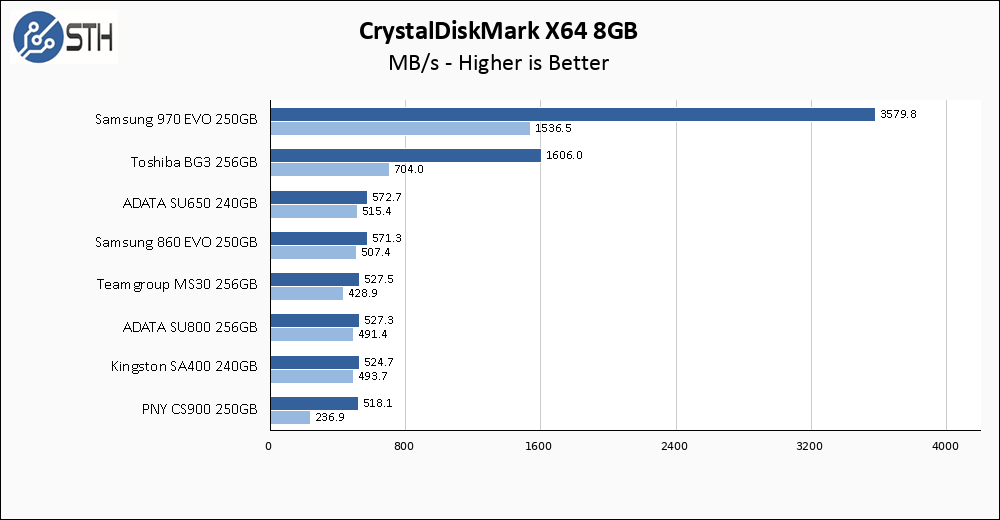
CrystalDiskMark performance between most of these drives is somewhat boring to look at, at least when only comparing the sequential read and write performance numbers as we include on our chart. The ADATA SU650 overperforms a bit, the Samsung 860 EVO is right on its heels, and the PNY CS900 underperforms on its write performance. Overall, with all of the drives turning in read performance above 500 MB/s in this short benchmark, day-to-day read performance in non-intensive workloads with these SSDs should all be similar and acceptable. That holds true with write performance as well, with the possible exception of the PNY CS900. All of the SATA drives trail the NVMe drives as expected, though they get somewhat close to catching the Toshiba BG3 in sequential write performance.
Anvil’s Storage Utilities
Anvil’s Storage Utilities is a comprehensive benchmark that gives us a very in-depth look at the performance of drives tested. This benchmark was run with the 8GB test size.
Drive-specific results can be found here:
Here is the summarized chart:
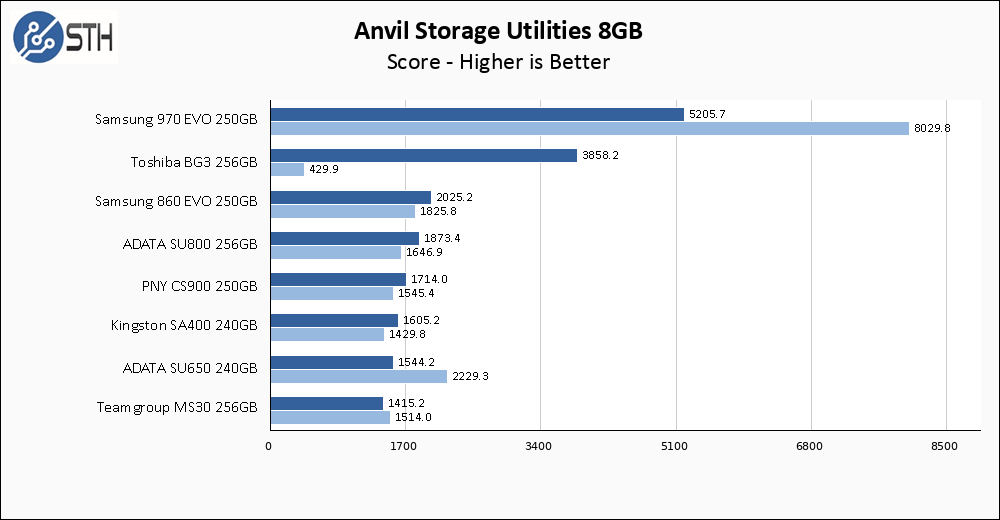
Anvil gives its results in the form of a read and write score that takes into account both sequential and random traffic patterns. Here the ADATA SU650 has a standout write score thanks to very good random write performance. The Samsung 860 EVO, our most expensive drive, turns in another good performance by leading our SATA pack in read score and turning in the second-highest write score. The Toshiba BG3 has difficulty with this test, with a high read score but an abysmal write score despite being NVMe in nature, proving that just because a drive is NVMe does not intrinsically mean higher performance than SATA in all scenarios.
Sustained Write Performance
This is not necessarily a benchmark, so much as trying to catch the post-cache write speed of the drive. While I am filling the drive with data to the 85% mark with 10 simultaneous write threads, I monitor the drive for the write performance to dip to the lowest steady point and grab a screenshot.
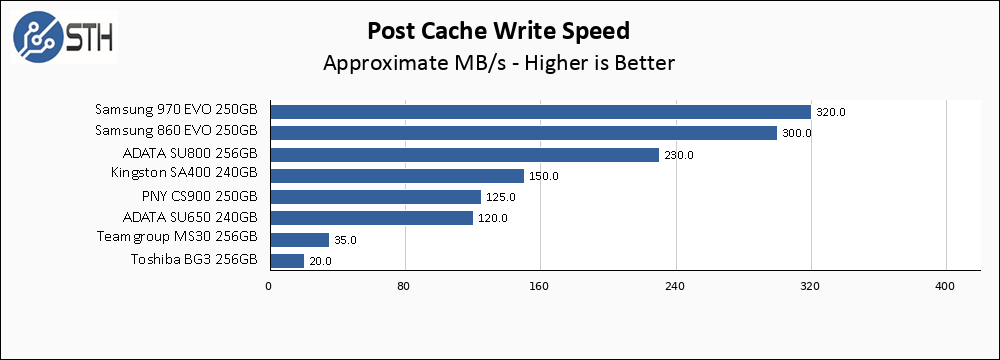
When it comes to sustained write speed, the Samsung 970 EVO NVMe drive barely manages to eke out a win compared to its SATA predecessor in the 860 EVO. Considering the vast disparity in the short-term performance between these two drives, the post-cache write speeds between the two drives are incredibly similar. The ADATA SU650 finally shows a bit of weakness here, coming in on the bottom half of our chart. Still, it managed to stay out of the company of the Teamgroup MS30 and the Toshiba BG3, both of which turned in abysmal performance after the cache ran out.
Final Words
My takeaway from this testing is that even amongst SATA drives, there can still be performance differentiation. When subjecting our test drives to heavy write loads, the difference between our best SATA performer in the Samsung 860 EVO and the worst in the Teamgroup MS30 was an 8.5x increase in performance. With that said, in bursty and shorter workloads our drives all performed much more similar to each other than in the long-term write test. Since most client workloads are likely going to be bursty and short, the post-cache write speed of these drives is not necessarily a reason to write any of them off.
Out of the field, two drives stood out to me: the ADATA SU650 240GB and the Samsung 860 EVO 250GB. Samsung is the most expensive SATA drive we were testing, but it is the only one to come with a 5-year warranty which helps justify that cost increase. It also came in with first or second place results in every benchmark we threw at it, which to me makes it the clear winner of this roundup. The surprise entry for me is the ADATA SU650, which turned in very good short-term results and was nearly the least expensive drive in our bunch.

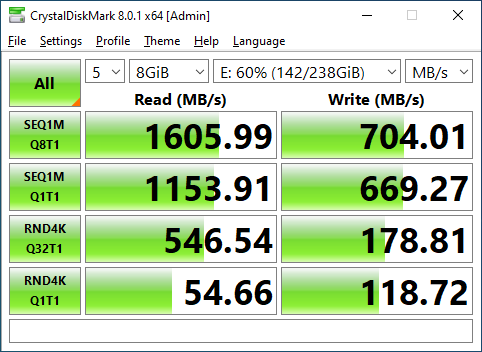
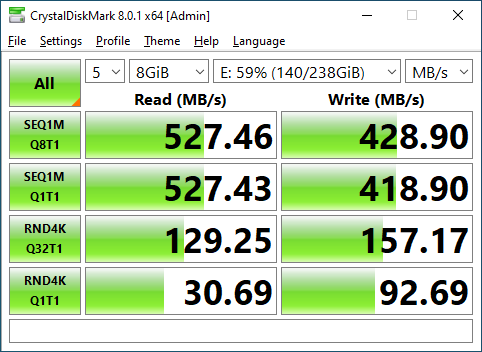
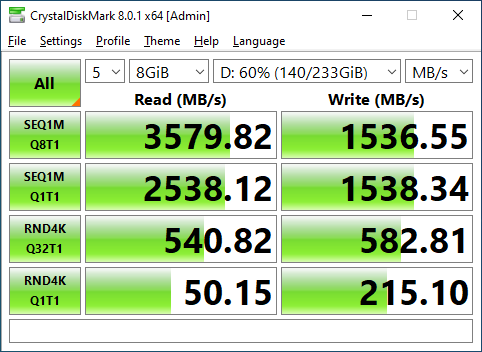

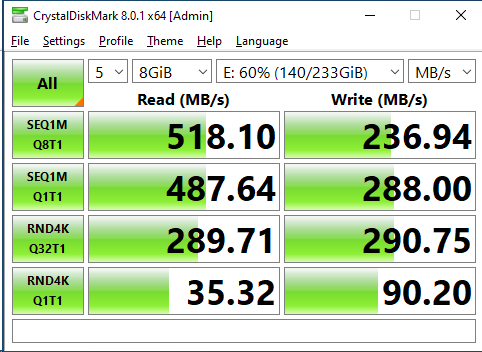

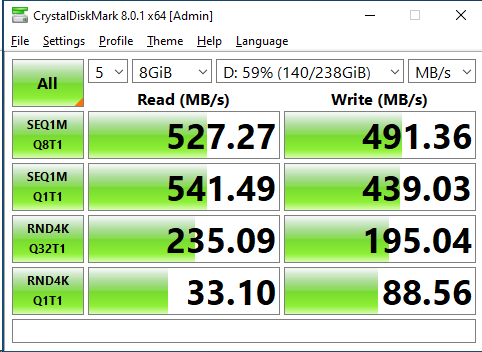
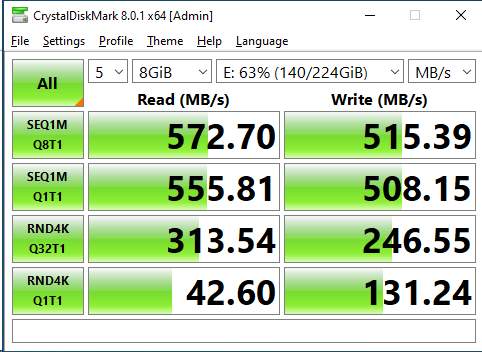
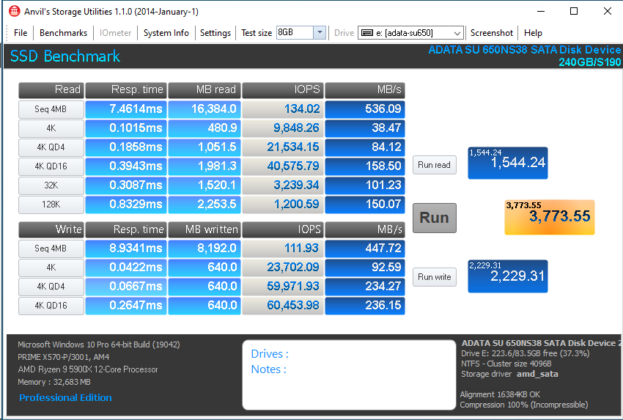
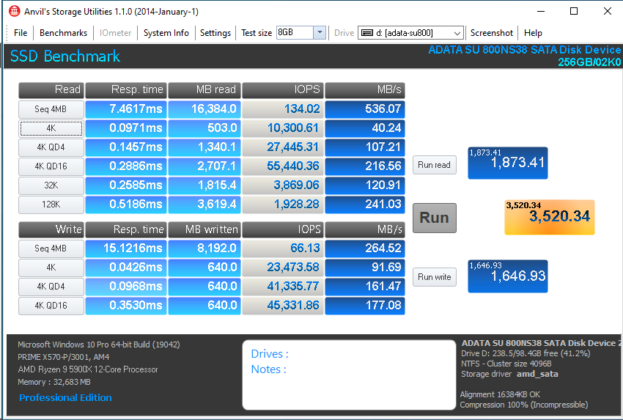
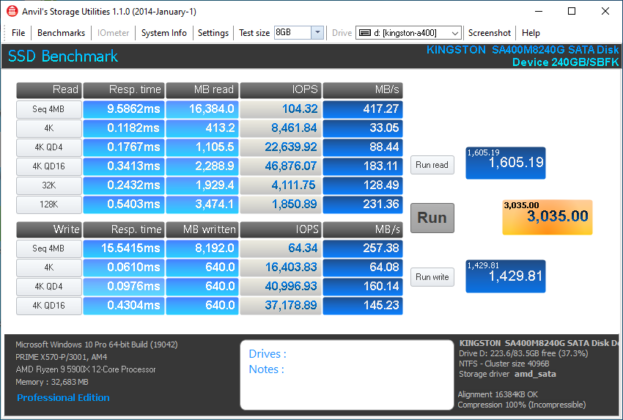
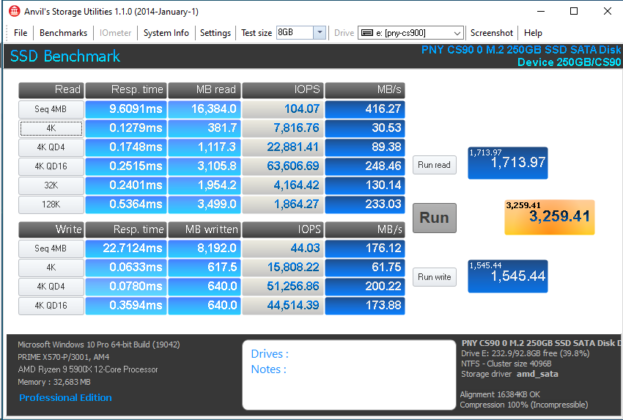
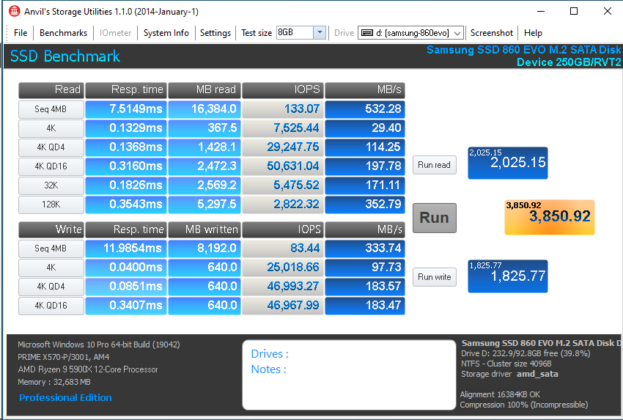
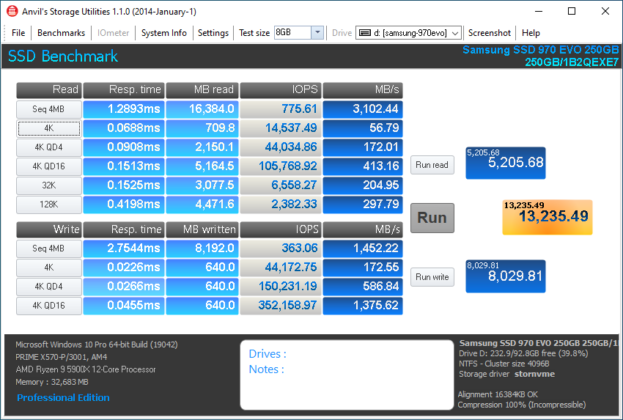
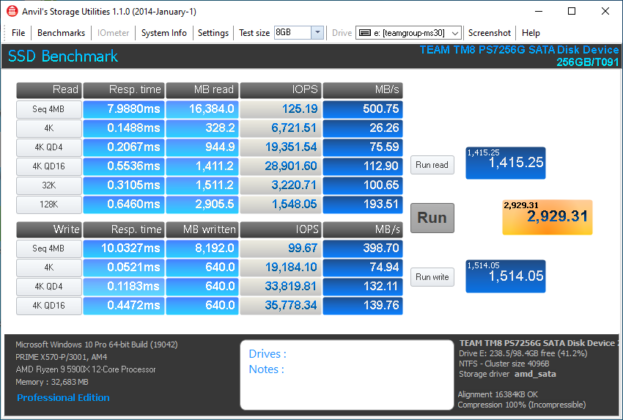
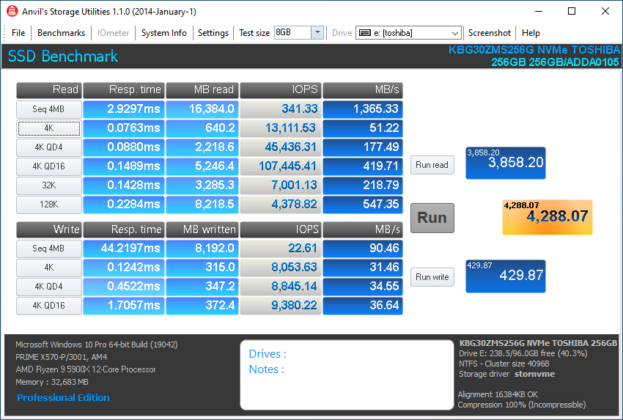



I love when Google connects my search history with relevant articles. If I buy a SATA SSD for my older inspiron, I’ll be sure to use one of your links. Thanks for the great testing!
Will, i have been using ADATA SU650 since a couple of years and found that at this stage i had to change most of them after jumping onboard Windows 10 as the SSD started to act erratically, fail to boot or breaking the file system, and after a low level format they seem to work right again as long as we keep them on Windows 7 (not particularly acceptable at this stage). ADATA didn’t bring so far any useful to the table on support (like a firmware update or fix). So their SSDs look fine hardware and performance wise but they may not be a sensible choice at SOHO use at least to me.
ADATA SU650 looks pretty good for a dram-less ssd I think.